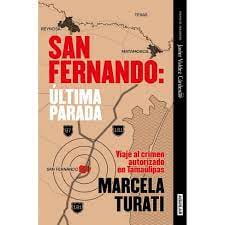A Review of Bolivia in the Age of Gas
Re-thinking Resources and Revolution in Bolivia
Bret Gustafson’s Bolivia in the Age of Gas is an ambitious and exquisitely detailed historical ethnography of Bolivia and its complicated relation with gas (and oil). Fossil fuels, Gustafson argues, have been central to the making of Bolivia, of this “gaseous state.” Drawing on a deep, decades-long engagement in the region, and through vivid historical and ethnographic narration, Gustafson shows us how and why fossil fuel extraction is crucial to understanding, politically and affectively, both the histories of revolutionary thought and the ongoing reproduction of settler colonialism, racial capitalism and patriarchy in Bolivia (and beyond).
Gustafson persuasively makes the case that the discourses and practices of revolution and decolonization in Bolivia, andU.S. imperial imaginaries and their brutal impacts, cannot be disentangled from fossil capitalism. Working within this frame, he carefully re-narrates Bolivian histories—of war and geopolitics, of the struggle to control oil and gas, of Indigenous dispossession and resurgence, of misogyny and white supremacy, and of course, of the rise and fall of Evo Morales—showing us the traps and limitations of any political project that remains anchored to fossil capital. “A rethinking of political futures,” he says, “requires questioning both the capitalist addiction to fossil-fueled growth and the nationalist aspiration for revolutionary oil, since both share the same dirty underside” (p. 69). Even as the left-leaning redistributive politics of recent years meant that more money and resources reached more people through excess or surplus rents from the gas industry (Morales’ nationalization of the gas industry was in fact a renegotiation of contracts), Bolivia’s continued dependence on fossil fuels (and on extraction more generally) has meant the persistence of global imperial capital and its violent excesses. This has had a particularly brutal impact on the everyday lives of Indigenous and poor Bolivians struggling to live and labor in the age of gas.
Not only is Gustafson complicating assumptions and narratives about Bolivian sovereignty, he invites us to think with and learn from Bolivians about the limits and possibilities of the current political moment. He asks us to imagine Bolivia otherwise, alongside Indigenous, anti-colonial, anarcho-feminist, queer and other Bolivian thinkers and activists, and envision radical political change “beyond merely capturing the state” (p. 4), and “beyond the social and ecological violence inherent in the material things we know as fossil fuels and the excesses they intensify—war, pollution, patriarchy, racial capitalism, and global warming” (p. 2).
Gustafson exudes an enviable clarity even as he insists on nuance, complexity and contradiction. I struggled to write this review because I felt I could not do the book justice given the limited space available and given the multiple (and intriguing) connections he makes between guns and oil in Texas and fascists in Santa Cruz, the nationalization of oil and gendered and racial violence in Camiri, the collusion of private oil companies (like Rockefeller’s Standard Oil), Bolivian elites, and U.S. militarism, the critical disruptions of anti-colonial and anarcho-feminist thinkers, and Indigenous vibrancy and complexity, among other things. Moving between “critical localism and critical globalism” (borrowing from the late Venezuelan intellectual Fernando Coronil), Gustafson’s writing reflects the subterranean complexity of the subject matter. Reading him at times reminded me of Tommy Pico’s (Kumeyaay Nation) Nature Poem, which could have served as a prologue to many of Gustafson’s own findings: “…it seems foolish to discuss nature w/o talking about endemic poverty which seems foolish to discuss w/o talking about corporations given human agency which seems foolish to discuss w/o talking about colonialism which seems foolish to discuss w/o talking about misogyny….”
This is part of the beauty of this work, the weaving together of the myriad pieces and fragments, desires and memories, affect and material politics in this complicated story. Thinking with the analytics of time (Part I), space (Part II), and excess (Part III), he takes us first from a critical reading of the Chaco War to the rise of Santa Cruz as an Americanized oil-fueled site of white-supremacist political and economic power, to the significance of the oil capital Camiri for understanding how male nostalgia over the “good times” brought by oil are linked both to racialized and gendered violence and to contemporary narratives about the “good life” made possible through control over gas. In the second part of the book, Gustafson offers a complex discussion about the fight for control over gas exports and the material and discursive struggles over territorial sovereignty it produced, culminating in the now infamous Gas War of 2003. Building on this historical groundwork, he discusses the rise of the Movimiento al Socialismo (MAS) and Morales—linked intimately to struggles and debates over the nationalization of gas—and the ensuing reactionary turn in the east and southeast of the country, led by conservative elites. Gustafson deftly describes the elite appropriation of autonomía (used by Indigenous movements to demand territorial self-determination), a tactic used to push for regional capital interests and against the nationalization of gas. It was also one that involved the cultural appropriation of Indigenous and peasant symbols even as it crafted a regional identity marking Indigenous and peasant others as racial invaders; and one that was accompanied by the expansion of terrifying violence against Indigenous bodies, a form of violence that encapsulated both past and present colonial terror. The final chapter in this section explores the tensions between Indigenous political projects and aspirations, and the expansion of the gas industry across Guarani lands; the ways in which “the gaseous state has now overtaken the social movement state” (p. 174). As he writes, “what we see is neither national liberation nor Guarani self-determination but the retrenchment of deeper patterns of state formation that continue to invisibilize and erase Indigenous territorialities, utilizing Indigenous bodies as available for maiming, when politically convenient, while the government selectively distributes rents to put salve on the wounds” (p. 155). The book’s final section explores the politics of excess: the overproduction of death and dead bodies, the realignment of labor—political, industry, informal, sexual—in the service of gas, and the “quarrels” over gas royalties, including the social, affective and political implications of redistribution and surplus spending from a place of subordination to fossil capital. It also returns to one of the central preoccupations of this book: “how to imagine a class-based struggle against imperial capital in contexts of deep inequality and dependence that is also a struggle against the particularly toxic effects of fossil fuels” (p. 244).
Gustafson’s chronological and conceptual approach is particularly helpful as he explains the ways contemporary battles over gas and sovereignty draw up and reanimate older histories, in many ways making this a story about the battle over memory and the persistence of colonial ghosts. This framing also contextualizes his critique of Evo Morales and his revolution, a thoughtful, careful, confident critique, without ever undermining Bolivian sovereignty or Indigenous struggles.
Gustafson’s writing is also sensorially powerful. He wants us to feel the heat of the Chaco, the affective energies of the nationalist (and masculinist) defense of oil and gas, the aural, visual, tactile transformation of landscapes and life around processing facilities. His words and analysis are grounded in the specificity of Bolivian life, history, and geopolitics, and yet they often resonate with other places and moments. Gustafson’s vivid description of Camiri during the years of the oil boom for example, brought my Peruvian grandmother to mind. Descriptions of the benefits oil men (and their families) received resonated with stories she would tell me about the shifting contours of life after my grandfather was promoted from miner to mine manager, and then sent from Ayacucho (in the southern Peruvian Andes) to work at an hacienda on the coast. Reading Gustafson reminded me of the old tapes I have stashed in boxes high up on the shelves of my office; tapes that document moments of my grandmother’s early life, like falling for a miner 15 years her senior, waiting for him to “steal” her away on horseback from her father (who raised her alone after her mother left when she was a toddler), and her relief when her father agreed to the union after my grandfather was promoted to manager of the mine. Like the story Gustafson tells, my grandparents’ experience is also a story about gender and race, about foreign capital and colonized labor, about the militarization of life and the pan-regional struggle over control of natural resources. Gustafson’s meticulous and at times deeply moving account inspired in me an urgency to learn more, to dig deeper, to remember family histories and their link to regional, national and transnational entanglements.
Gustafson’s story is also as much about fossil fuels and the making of a nation as it is about masculinity and misogyny. In telling this story, Gustafson writes powerfully about the ferocity of fossil capital’s impact on women, queer and racialized bodies, even as he amplifies primarily the voices and writing of male protagonists (though not uncritically). He is aware of the limitations of this approach—of deploying the voices of male thinkers to critique the misogyny of fossil capital (pp. 17-18); and he offers important discussions throughout the text about “expressions of gendered toxicity emanating from masculine excess (p. 245),” as well as “digressions” that bring to the fore the political and intellectual work of radical women, like the defiant anarcho-feminist María Galindo, and the historian Margaret Alexander Marsh who explored the powerful role of U.S. banks in Bolivia in the 1920s. While I would have loved to read more about other “digressions” (e.g. the Peace Corps accused of sterilizing indigenous women, p. 65), Gustafson opens up important space for thinking with feminist histories, and histories of gendered violence, space that allows us to engage alternative tellings of refusal and resilience (e.g. p. 159), and explore the ways gendered and racialized subjects refuse to allow this brutality to define them.
Gustafson’s writing contributes to critical conversations about imagining alternative political horizons and possibilities. In The Great Derangement: Climate Change and the Unthinkable, Amitav Ghosh writes about the significance of art and literature to the radical rethinking of life in the Anthropocene. For Ghosh, who is both novelist and anthropologist, the climate crisis is as much about culture as it is about science; it speaks to our desires, to our desire for the good life, for freedom. And this is a crucial part of the problem. As he describes it in an interview with the Los Angeles Review of Books, “so often the imagery of freedom has to do with an automobile or a motorcycle…. You’re speeding down an open road with your hair blowing in the wind. That’s really what freedom has come to mean to us. Yet we never consider that this kind of freedom is dependent on the road, on the machine that some giant corporation produces for you, and on the gas that an even more enormous corporation produces for you. So it’s really not freedom at all.”
Gustafson’s analysis resonates deeply with Ghosh’s observations. While Gustafson’s work is not fictional, it performs the kind of imaginative labor that I think Ghosh is asking for. He reminds us that any discussion of decolonized futures should include a recognition of the pervasive force and violence of fossil capital, even in seemingly progressive or even revolutionary movements. And he invites us to learn from the story of Bolivia, to find inspiration in, as he puts it, “the accumulation of political senses that I hope some might find useful for confronting the fossil empire of today” (p. 17).
Winter 2021, Volume XX, Number 2
María Elena García teaches in the Comparative History of Ideas Department at the University of Washington. She is the author of Gastropolitics and the Specter of Race: Stories of Capital, Culture, and Coloniality in Peru (University of California Press, 2021).
Related Articles
A Review of Default: The Landmark Court Battle over Argentina’s $100 Billion Debt Restructuring
In February 2019, I found myself serving as the special attorney general for the then newly recognized interim government of Venezuela, tasked with addressing more than 50 claims before the U.S. courts stemming from the $140 billion debt inherited from Hugo Chávez and Nicolás Maduro.
A Review of Until I Find You: Disappeared Children and Coercive Adoptions in Guatemala
A student in my “Introduction to Cultural Anthropology” course at the University of Delaware approached me several weeks ago, after hearing about my long-term research in Guatemalan communities, to tell me that they were born there, in Guatemala.
A Review of San Fernando: Última Parada, Viaje al crimen autorizado en Tamaulipas
One of Mexico’s best investigative journalists, Marcela Turati, takes readers to terrorized and traumatized San Fernando, a town known for dozens of mass graves, and exposes the depths of criminal brutality and official corruption that hid the bodies and the truth for years.





